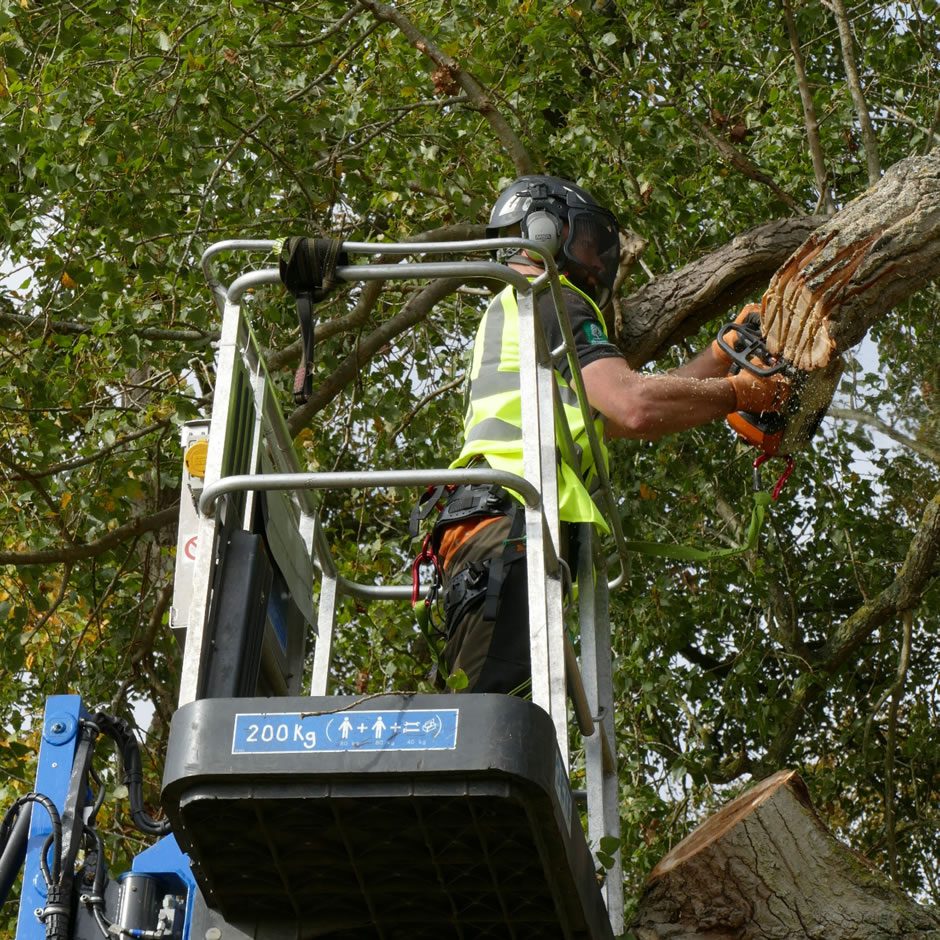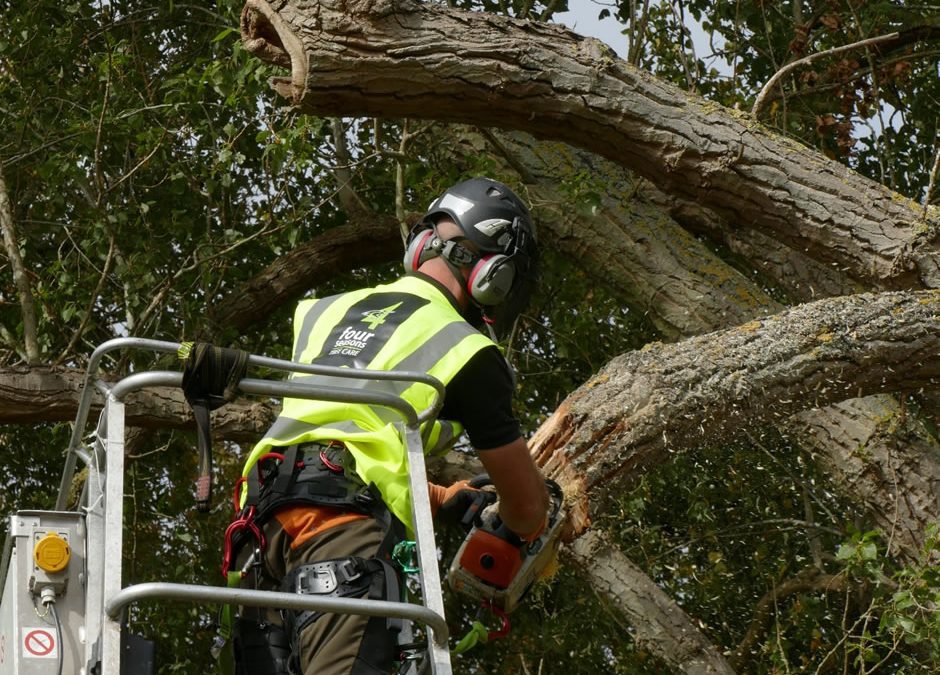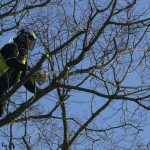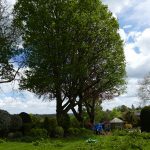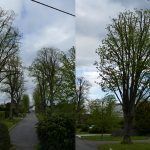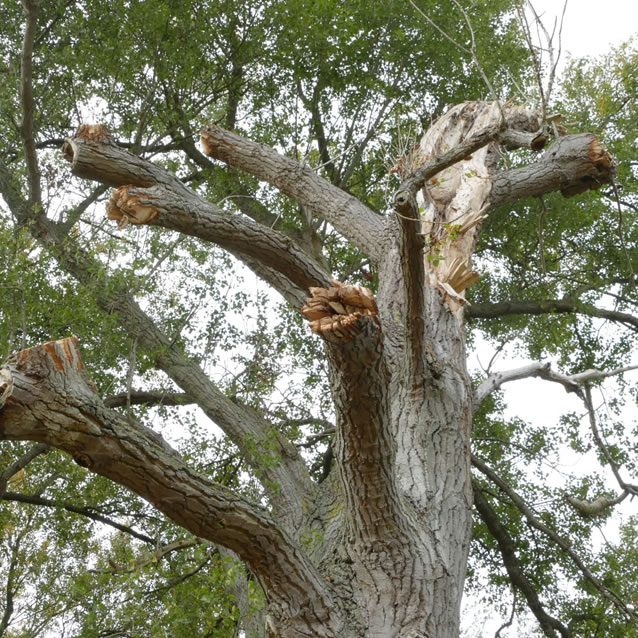
As a native species Black Poplars have an important role to play in the ecology of this area and as such it was decided to ‘veteranise’ the tree by turning it into a pollard with using techniques that mimic natural processes and create features associated with older trees as they naturally decay and break up.
We were able to create a very large tear wound at the top of the main stem with lots of splits running through the wood fibers. A wound of this size will inevitably attract different species of decay and saprophytic fungi. Wasps, beetles, and other insect species will in turn find a home here and of course many bird species will be attracted to the food sources available as well as being able to find habitat for nesting.
The main limbs were all shortened back or pollarded with ‘coronet cuts’ used which mimic natural storm damage. The small cracks and splits created can often be used by roosting bats.
This tree will regenerate with new growth but the natural decay processes associated with older trees have effectively been kick started by the techniques used to pollard the tree. This effectively boosts the ecological value of the tree.
Obviously this is not a technique that can be used in every situation but here on the edge of a woodland beside a stream it is an ideal form of tree management.
